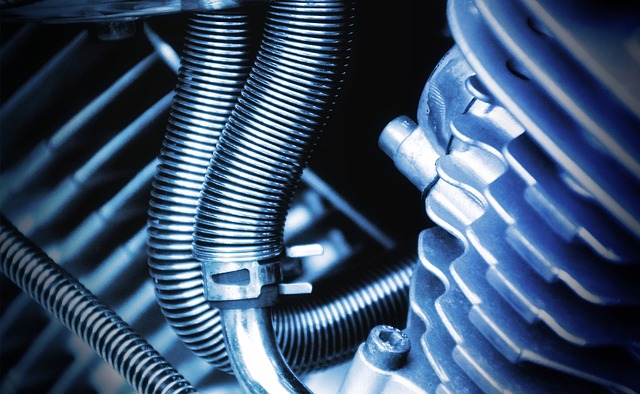Riding a motorcycle is one of life’s greatest pleasures. But to keep your bike running in tip-top shape, you need to be sure its electrical system is functioning properly, including the rectifier.
If your engine isn’t starting right up or if it’s not charging correctly, it could be time to test the rectifier. Testing and replacing a motorcycle rectifier isn’t daunting – all you need are the right tools and materials and some basic technical knowledge.
With this guide, you’ll learn how to diagnose any issues with your rectifier and replace it if needed so you can get back on the road in no time!
Key Takeaways
- Motorcycle rectifier is essential for proper functioning of the bike’s electrical system
- Testing and replacing a motorcycle rectifier is necessary for maintenance
- Use an ohmmeter or multimeter to test the rectifier
- Regularly perform maintenance and testing on the motorcycle rectifier
Understand the Basics of a Motorcycle Rectifier
You need to understand the basics of a motorcycle rectifier before you can test it, so let’s get started!
A rectifier is an electrical device used to convert alternating current (AC) into direct current (DC). Motorcycle rectifiers come in two types: AC-only and full-wave. An AC-only rectifier converts only one half of the AC waveform, while a full-wave rectifier converts both halves.
It’s important to ensure electrical safety when testing any kind of rectifier. Make sure that all connections are secure and that no exposed wires are present. Use insulated gloves and other safety equipment as necessary.
To test the rectifier, use an ohmmeter or multimeter to measure resistance in both directions between its terminals. If there is continuity in either direction, then the device is functioning properly.
Gather the Required Tools and Materials
In order to test the motorcycle rectifier, you’ll need a multimeter and electrical tape. A multimeter is an electronic device that measures electric current, voltage, and resistance. Electrical tape is used to insulate wires and connections from short circuits or other possible damage caused by contact with metal surfaces.
Both of these tools are essential for testing the motorcycle rectifier accurately and safely.
Multimeter
A multimeter is a must-have tool for testing a motorcycle rectifier, as it can accurately measure voltage, current, and resistance. In fact, up to 95% of all electrical problems can be diagnosed with the use of a multimeter.
It is important to check the connections before taking any readings to ensure an accurate outcome. With the multimeter set to DC Volts mode, you should check the voltage output from the rectifier.
- Check both sides of each terminal for correct polarity.
- Connect the meter’s positive lead to one side and negative lead on the other side.
- Check the reading against the manufacturer’s specifications.
- Utilize continuity mode if necessary.
Be sure to observe safety protocols when conducting tests.
Electrical Tape
To ensure optimal performance of electrical components, it’s essential that you use electrical tape. Electrical tape is a simple but effective way to protect your motorcycle rectifier from shorts and manage its heat levels. It also provides protection against dust, water, and other external elements.
When using electrical tape on the rectifier, make sure to wrap it around all exposed wires and connections. This will help prevent any short circuits or overheating. It can also provide additional insulation to regulate the temperature within the system.
You should also check for any tears or breaks in the tape before continuing with installation. If you find any, replace them immediately as they could lead to potentially dangerous conditions like fire or electrocution.
Prepare the Motorcycle
Before testing the rectifier, it’s essential to prep the motorcycle like a knight readying for battle. This includes ensuring your motorcycle is in proper condition and safe for riding. To do this, you’ll want to:
- Regularly maintain your battery by cleaning terminals, checking fluid levels, and tightening cables.
- Inspect tires, brakes, lights, and other components for any issues or wear and tear.
- Check all fluid levels, including oil, coolant, and fuel, to ensure they are at the correct level.
Finally, always wear protective gear when working with electrical components of a motorcycle, such as gloves and safety goggles. Taking these steps will ensure that not only your test of the rectifier goes smoothly but also that you’re safe while doing so.
Test the Regulator/Rectifier
Once you’ve prepped your motorcycle, it’s time to put your regulator/rectifier to the test. This is an important preventative maintenance step that can protect your machine from voltage surges, and ultimately save you money in repairs.
To perform this test, begin by unplugging the three-wire connector from the rectifier. Using a multimeter set to AC volts, measure the voltage coming from each of the three wires. The reading should be between 14 and 16 volts when the engine is running. If any of these readings are outside of this range, replace or repair the rectifier immediately.
Next, check for continuity between each pair of connectors using an ohmmeter set to resistance mode; there should be no continuity here either.
Lastly, reverse polarity on two of the terminals and recheck for continuity; again there should be none present here either.
If all tests successfully pass then you know that your rectifier is working properly and further preventative maintenance isn’t required at this time.
Troubleshooting the Rectifier
If any of the readings are outside the expected range, it’s time to troubleshoot the rectifier. Begin by checking the connections and wiring for any signs of loose or disconnected wires.
If this doesn’t solve the issue, check that all components such as fuses and switches are in working order.
If there is still no change, adjust the voltage regulator to bypass current while monitoring its output with a multimeter. Make sure to double-check it after adjusting it and confirm that changes have been made correctly before attempting any further adjustments.
Finally, look for any other possible issues such as bad grounds or defective parts that could be creating problems with your rectifier.
Replace the Rectifier
Replacing a rectifier can be a tricky task, so it’s important to make sure you do it correctly. First, disconnect the negative grounding wire from the battery and remove the rectifier from its housing. Then, use a voltage meter to check continuity between all three terminals on the rectifier. If any of them register an open circuit or low reading, then you’ll need to replace it with a new one.
| Emotion | Description |
|---|---|
| Frustration | Trying to figure out how to test and replace the rectifier can be challenging and time consuming. |
| Relief | After replacing the old rectifier with a new one, you may feel relieved that your motorcycle is running properly again. |
| Satisfaction | You’ll feel accomplished when you install your new rectifier correctly and without any issues! |
Perform Regular Maintenance and Testing
To keep your bike running in top condition, it’s essential to perform regular maintenance and testing.
This includes checking the wiring and inspecting all connections on your motorcycle rectifier. You should look for any signs of wear or damage that could lead to problems down the road. Make sure all wires are properly routed and secured, as well as any exposed terminals or connectors. If something appears out of place, replace or repair it immediately.
You should also check the voltage output from the rectifier to make sure it’s within specifications. Use a multimeter to measure both the AC and DC voltage output from the rectifier while also monitoring its temperature. Be sure to use insulated gloves when handling any electrical components on your motorcycle rectifier.
Finally, always test your rectifier after replacing or making repairs to ensure everything is functioning correctly before taking your bike back on the road.
Frequently Asked Questions
What type of rectifier should be used for my motorcycle?
To determine the best rectifier for your motorcycle, consider its power ratings and voltage requirements. Analyze these specifications to select a rectifier that can provide adequate performance without being overpowered or underpowered.
How much will it cost to replace the rectifier?
Inspecting the rectifier will cost you, but the replacement costs can vary. Compare prices to get the best deal and ensure your motorcycle runs safely.
Are there any safety precautions I should take when testing the rectifier?
When testing the rectifier, make sure to take necessary safety precautions. Wear insulated gloves and be aware of any potential electricity hazards. Regular maintenance can help reduce costs in the long run.
Are there any special instructions for testing the rectifier in cold weather?
When testing a rectifier in cold weather, be aware of temperature fluctuations and how they may affect the results. Make sure you take all necessary safety precautions to ensure accurate readings.
How often should I perform regular maintenance and testing on the rectifier?
You should test the rectifier regularly depending on your motorcycle type and usage. Generally, it’s recommended to perform maintenance and testing every three months or as specified in your vehicle manual.
Conclusion
You’ve now completed the testing of your motorcycle rectifier. Don’t forget to keep up with regular maintenance and testing to ensure it’s always performing at its best. If you experience any problems, don’t hesitate to troubleshoot or replace the rectifier as needed.
Gather the proper tools and materials, prepare your motorcycle, and test the regulator/rectifier before taking it for a spin! With a little bit of knowledge and effort, you can keep your bike running smoothly for years to come.


